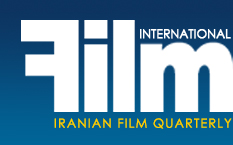|
FIPRESCI Critsics' Perspective on Iranian Independent Cinema (Part- Eleven)

Kostas G. Karderinis
Film Critic/Greece
How much do you know about Iranian culture? Do you know any Iranian artists out of the field of cinema?
- In the field of poetry I know Omar Khayyam, Attar of Nishapur, Saadi Shirazi, Rumi, Khosrow & Shirin by Nizami Ganjavi. I have also read The Persians by Aeschylus. In the fields of sculpture and architecture, I know the winged Abul Hol statue that belongs to the Achaemenid period. I also like Persian carpets and miniatures. I know a few of the Iranian photographers such as Shirin Neshat and Khosrow Hasan Zadeh. I am familiar with Iranian music through the film of Bahman Ghobadi’s No One Knows about Persian Cats. I have also read many books and articles about Iran with Greek translation.
How did you become acquainted with Iranian Cinema? And when was the first time you watched an Iranian film?
- In 1992, Dimitri Eipides, a well-known film critic, presented all Abbas Kiarostami's films, such as The Bread and Alley, The Chorus and many others, as well as Alireza Davoudnejad's The Need at Thessaloniki Film Festival. It was an extremely surprising experience for me. I realized that simplicity is a rule for Iranian cinema. During that same year, Atom Egoyan and John Cassavetes also released films and all of these films opened up a new perspective on the nature of cinema for me. It might interest you to know that I’ve written more than 20 extensive and detailed articles about Iranian cinema so far, something I’ve never done for any other country. My articles are in Greek.
What do you think are the most important matters that Iranian independent filmmakers should work on?
Firstly, the innocent world of children like Color of Paradise, Children of Heaven, The Father, Turtles Can Fly, etc.
Secondly, Inequality, social justice, and women's rights such as films The Circle, The Blue-Veiled, The Day I Became a Woman, Women's Prison, Offside, Persepolis, etc.
Thirdly, social issues, moral prejudice, religion, and criticizing the government. Examples are Under the Skin of the City, A Moment of Innocence, End of the Earth, The Peddler, No Date, No Signature, etc.
Fourthly, speculating on the nature of existence through loving life like Abbas Kiarostami’s films such as Taste of Cherry, Through the Olive Trees, etc.
I should also mention that these themes may be combined at some point, which is inevitable.
What are the main factors for the success of Iranian cinema at a variety of film festivals in the world?
- I can name a few. First: a realistic presentation of an unknown culture based on family ties and daily life. Second: discovering the secrets of childhood in an unimaginable way. Third: conscious self-censorship. Fourth: criticizing the fossilized thoughts and ideas. Fifth: a new definition of man and woman relationship. Sixth: defining the emotional pain, and seventh: making a film even when imprisoned.
Which of the Iranian filmmakers do you like the most?
- Without any order: Dariush Mehrjui, Mohsen Makhmalbaf and his entire family, Abbas Kiarostami, Bahman GHobadi, Asghar Farhadi, Manijeh Hekmat, Rakhshan Banietemad, Shirin Neshat, Shoja Azari, Marjan Satrapi, Jafar Panahi, Babak Payami, Majid Majidi, Kianoush Ayari, Mohammad Rasoulof, Amir Naderi, Ramin Bahrani, Abolfazal Jalili, Ebrahim Forouzesh, Parviz Shahbazi, Mohsen Amiryoussefi, Hossein Shahbi, Vahid Jalilvand, Ali Asgari, Sadaf Foroughi, Reza Mirkarimi, and Ali Souzandeh.
Some directors are out of the country and can make films with no limitations. Some others work in silence
Which cinematic movements in the world, whether before or after the Islamic Revolution, have influenced Iranian cinema?
- Italian Neorealism, French New Wave, Free Cinema, Charlie Chaplin’s comedy-tragedy, Surrealism, Kafka and European Noir, European theater, etc.
Iranian cinema has localized all of these movements, waves, and fields in some way and has transformed them according to the developments of the time before and after the Islamic Revolution.
Are you familiar with the new generation of Iranian filmmakers?
- Not as much as I know the previous generation, but I have recently watched Ballad of a White Cow by Behtash Sanaeeha and Maryam Moghadam. The other titles I’ve watched from the new generation include: I’m Trying to Remember (2021) by Pegah Ahangarani, Water, Wind, Dust, Bread (2021) by Mahdi Zamanpour Kiasari, Be My Voice (2021) by Nahid Persson and Radiograph of a Family (2021) by Firouzeh Khosrovani.
What is your opinion regarding the status of women in Iranian cinema?
- After the revolution, women are almost invisible. In my opinion, Kiarostami’s New Wave cinema gave them voice, image, space, and position by having a new practical, and experimental approach. The directors of the new generation, both men and women, focus more on women's issues and methods of fighting against the patriarchal society, as well as striving for their independence. Unfortunately, some Iranian female filmmakers work under restrictions. In my opinion, personal and artistic limitations are much better than other limitations
What do you think is the future for independent filmmakers in Iran?
- Considering the restrictions for some directors, I don't see a very secure future for Iranian cinema. Some directors who work outside of Iran have found a very high position and can be the standard bearers of Iranian cinema.
[FIlm Magazine NO. 605]
|

